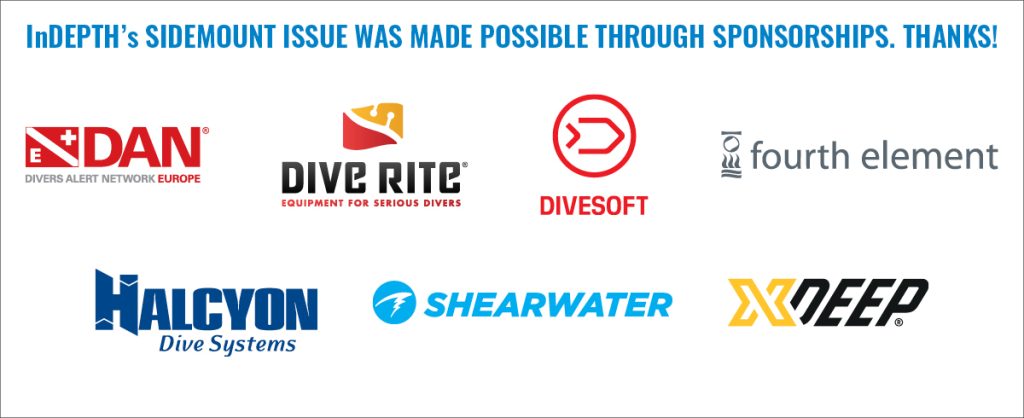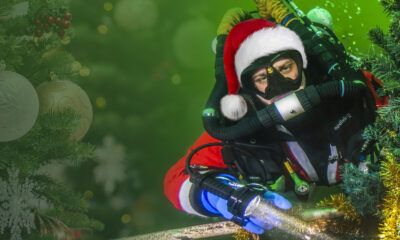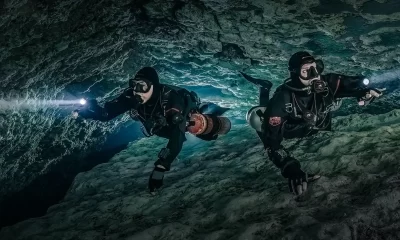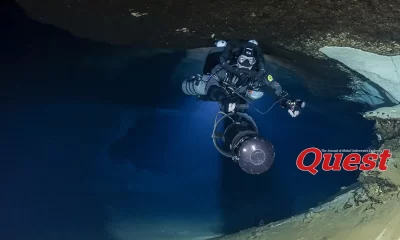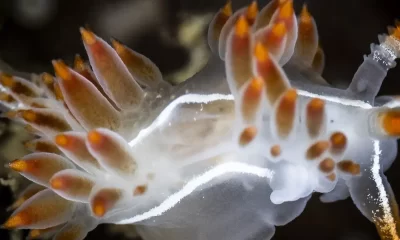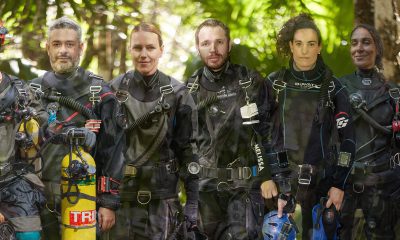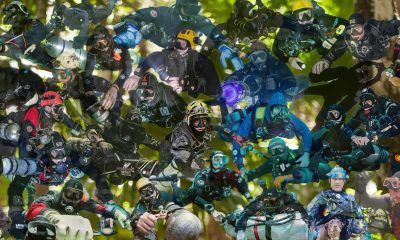Community
The Who’s Who of Sidemount
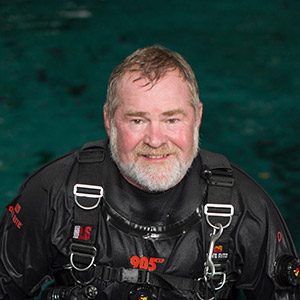
Lamar Hires
Cave diving pioneer, explorer, educator and inventor Lamar Hires is the founder and president of Dive Rite Ltd., Lake City, Florida and has been exploring and building equipment for exploration for more than 40 years. He has also been instrumental in the development and management of cave diving education through the National Speleological Society-Cave Diving Section (NSS-CDS), where Lamar has served, as president, training director and director over the years. Lamar, along with his mentor Wes Skiles, Woody Jasper, Tom Morris and Mark Long helped pioneer the development of early sidemount equipment and training as far back as the early 1980s. Dive Rite continues to build sidemount systems and have just released their new Nomad Ray sidemount system just prior to the issue being released.
Interview by Michael Menduno
What is sidemount to you?
For me sidemount was a mission specific tool to explore caves that we couldn’t do on backmount. The technology was so crude we used it when necessary, not because it was preferred, it had many shortcomings as we developed it. We were trying to tag the end of the line left by our mentors, so we had to carry a lot of gas. As I recall, Woody was the first to start playing with sidemount in North Florida and I started using it in 1982 when we felt the need for an alternate configuration to push exploration. I remember asking Sheck why he stopped trying to push Rock Bluff, in 1982, after I started working at Branford Dive Center and he smiled and said there was far easier exploration to do. Bill Main and I later reminisced we were lucky in the 80’s with plenty of low hanging fruit for exploration.
We continued to look at where Sheck and others stopped but also found plenty of exploration in smaller caves that were not backmount friendly or had a couple of restrictions before opening up. For us, sidemount opened up some exploration others didn’t do. It was very gnarly at times, we had to come up with signals for getting stuck and needing assistance to be extricated from a restriction that was smaller than we thought, or our equipment ratcheted us in place so we couldn’t move. This happened more than once.
Over the years sidemount evolved from an exploration tool to a life style choice of diving. It can make technical diving easier for some that can’t carry the weight on their back or wish to dive places that don’t support the use of backmounted twins. What I find most interesting are all the online sidemount gurus. It blows me away to know what took me 40 years and still learning to be mastered by some in a few short years.
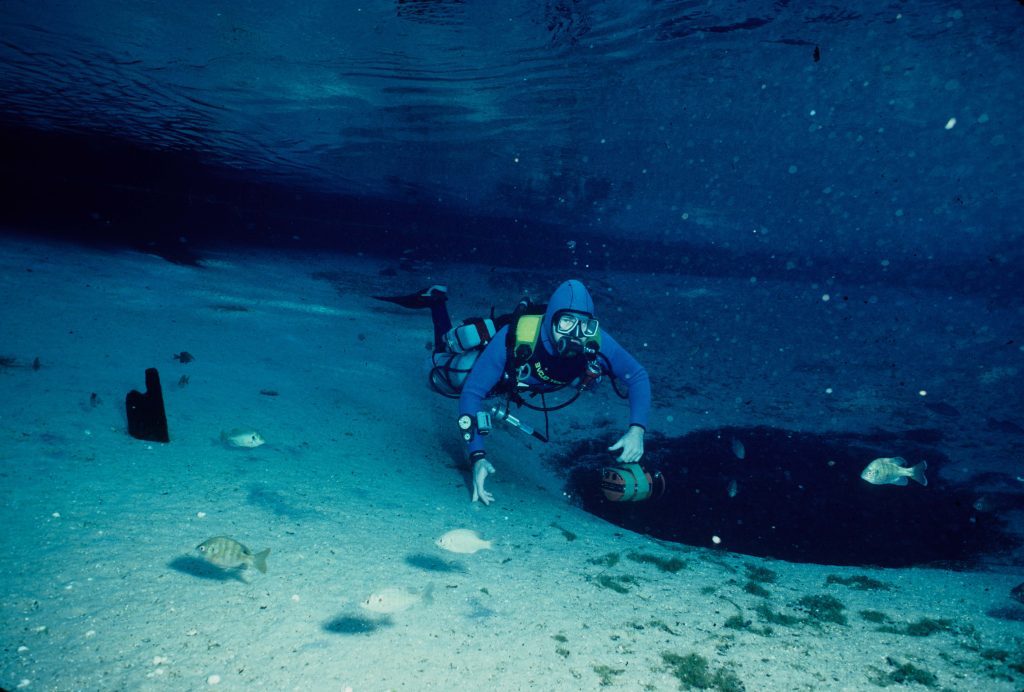
What can be improved in sidemount in general?
Sidemount has become so popular that many innovations have evolved, some are cylinder dependent while others are environmental. I remember when we were figuring out how to carry a stage bottle on our side rather than just clip it to a d ring. Woody came up with the idea to use bicycle inner tube to pull the cylinders up into the arm pit for streamlining to swim against flow. We used it for years and now we use bungee cords.
I remember the day Wes was cleaning out some worn out gear and threw away his old Sherwood jacket BC, Woody picked it up and asked Wes how much he wanted for it, Wes quickly said $5 after he had thrown it in the rubbish pile. Woody took it and made the first sidemount platform using a jacket BC and we quickly changed from backplate/wing to Woody’s jacket style. This lasted for years until we moved on to soft backplates and wings when I needed a different platform for my expeditions in a remote karst region in northern Japan. We needed to carry gear thru a dry cave and then dive the unknown. We needed to climb waterfalls with our gear so steel 45’s on our back for transport and shift them to sidemount for some of the small underwater sections this was the start of the Transpac. The evolution continued with the Dive Rite Nomad harness using a soft backplate and wing to Bret Hemphill’s following with the Armadillo.
If you watched the Thai Cave rescue movie “13 Lives” you see Rick Stanton’s British sump diving harness, rigged for diving, walking and climbing in caves with some water passages. Far different from the rigs of today for open water and cave diving in Florida, Mexico and a few other popular spots.
Sidemount has evolved over the last 40 years from piecing openwater gear to work as sidemount rigs to sidemount specific rigs and regulator configurations. I believe the current evolution is the acceptance of new rebreather technology into sidemount configurations.
Was there an epiphany moment for you with sidemount?
I never had an epiphany moment for sidemount diving. We were excited to explore new cave. The little things started coming together as we found new cave, sidemount became our preferred exploration tool. We also started to figure out best cylinder choices and started to develop primary handheld lights to get rid of weight.
In places that Sheck Exley couldn’t get to!
Exactly. It was one thing to go to the end of their lines and figure out a route with sidemount, it was more exciting to find caves that others had missed and it turning into a major find that others would enjoy. The best one was finding a route into upstream Cow Springs, a NSSCDS property now. We had dived and used the downstream section for teaching cave diving but could never find an opening big enough for an upstream lead. It wasn’t easy, it required both bottles off to get thru the first three restrictions, but it opened up after that. Later we found other routes to the upstream and eventually the route that allows the adventuresome cave diver to do it with twins on his back.
What would you do differently if you could go back and have a conversation with yourself in the 1980s?
Hindsight is something we all wish we had. We could have shortcut many designs we suffered thru but, in the end, too many other things had to happen to get to what we take for granted today. First, we were using steel cylinders in North Florida. Bill Main pioneered using aluminum 80’s for stage bottles while we were using steel 72’s with cave fills. The canister lights were heavy lead acid or the unreliable NiCad batteries, both were bulky. Woody built the first true handheld primary light to address this. It was 4” PVC and 15” long, but the burn time was equal to any canister light and it was neutral in freshwater. At the time this was a major break thru to get the heavy primary canister off bottom of the rig. The major hurdle to good trim in the caves.
After we had found the upstream, Cow springs exploration continued after Dan Lins discovered the warm plane lead. A couple of dives in this section proved very important to advancements in sidemount configurations. Dan pushed thru a restriction and the cam strap slots on the jacket got him hung up on rocks protrusions from the ceiling. He couldn’t move, I had to reach in with zero visibility to discover what had him hung up. It was very tense for about ten minutes while we got him out. After that we rerouted the inner tube thru the slots to hold the jacket BC close to the body to hopefully prevent this again. One more issue resolved as we figured everything out. Dan and I went back to see what was beyond the restriction.
This time Dan had a primary light issue and I went on alone. I passed thru the restriction without issue to find it ended in a small room. I turned to exit happy with the fact our new routing of the inner tube fixed it. Then I found myself stuck, hung up in the same place Dan got stuck. I was solo and not sure what to do. I made sure my regulators were not compromised and I pushed as hard as I could and my primary light went dead. The power cord from my butt mounted light was caught on the same rock that Dan had encountered. I am solo, primary light out and now 8 pounds/3.6 kg heavier with a flooded battery pack. Back then backup lights looked like candles compared to our primary lights. After swimming and bouncing along for 500 ft/152 m Dan shows up and brightened my day since I didn’t have to do the next 3000 ft/914 m solo on a backup light. This is when we looked at angling the power cord from the canister for better routing.
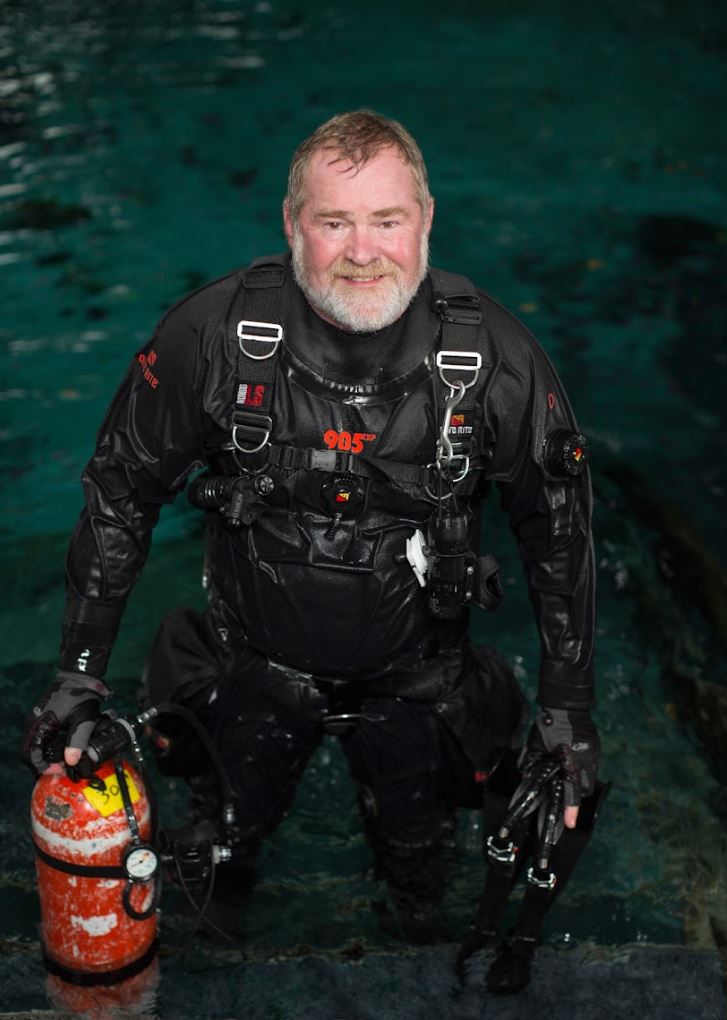
This was the 80’s, by the end of the decade we stated looking at wings again but used tie downs to keep it from having the taco effect. It proved easier for carrying heavy steels but still had its draw backs. There were some caves with restrictions. Not every restriction is a tight fit, some are just odd shaped openings that require some wiggling or turning on your side to fit. Like putting a key in a lock. Backplates were too rigid for some of these places.
That’s fascinating to hear Lamar, how things were actually developed.
My first trip to Mexico in January of 1987 introduced me another world of cave diving. They were cave diving with doubles and we had to put our doubles together. This was very time consuming since it was work getting the valves out of the singles to make doubles. I remember sending Akumal Dive Shop a tap to clean the threads on the cylinders. We found shops reluctant to let us convert singles to doubles. Sidemount became a viable option for cave diving in Mexico with the lack of resources to promote cave diving as we knew it with doubles.
Mexico gave us new inspiration for sidemount, lots of caves and not enough doubles for visitors. Diving aluminums was easier than steels, buoyancy requirements were less, the shallow, no flow caves made the aluminums perfect for the region. The sherpas could handle a few singles better than some twins hiking thru the jungle.
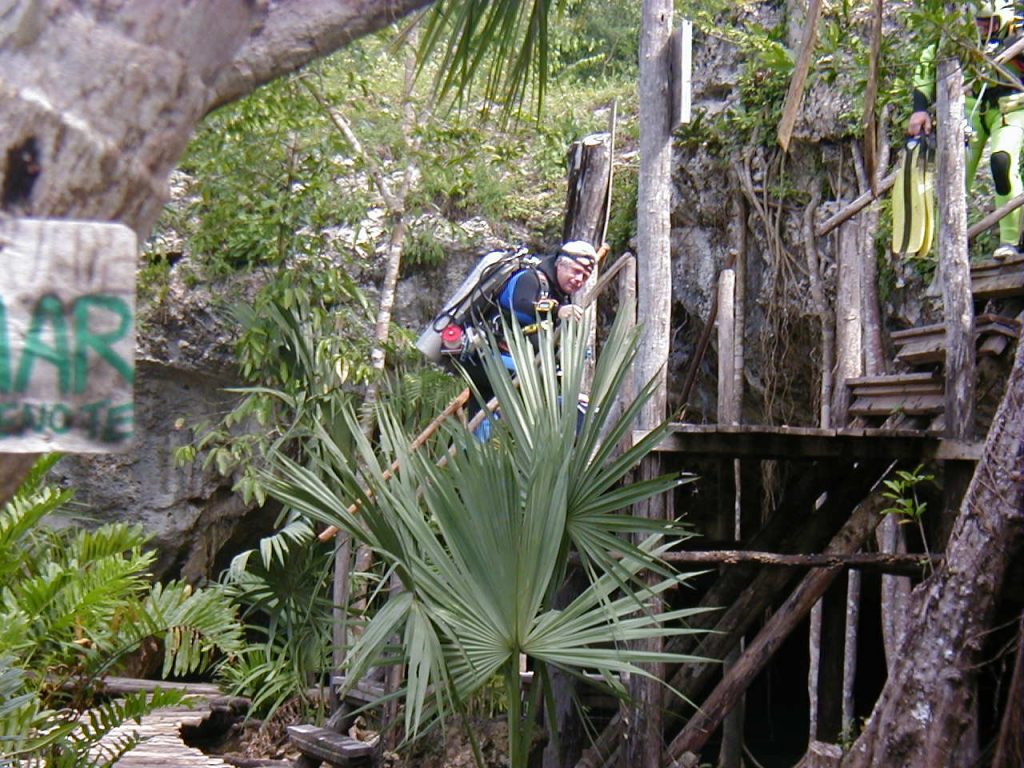
Dan Lins brought sidemount to Mexico in 1992 when he went to Mexico to live, teach and explore. Dan Lins
I remember Dan.
His name is on most of the Mexico maps. I trained him in cave diving in 1987, we went to Mexico that year. He fell in love with it. We came back to Florida and he spent the next four years getting all his affairs in order, getting all the credentials he needed to teach, sold everything, packed up and went to Mexico for ten years. He was the one that introduced the cave divers in Mexico to sidemount. But here again it was a tool. And down there it became a more viable tool for just the walk to the cenotes. Now days when we think of Mexican sidemount diving, we think of Steve Bogarts, Bil Phillips. Well, who trained them? Dan did. People forget that and I trained Dan and we became dive buddies.
It’s too late to add him to our Who’s Who list of pioneers, but we will give him a shout out here! RIP Dan!
He passed away a couple of years ago. He’s one of those forgotten names because after 10 years in Mexico, he decided to move back here to Florida. Then he worked for me until he passed away. He enjoyed mentoring cave divers and riding motorcycles.
You’ve been at this sidemount for 40 years, and you just came out with a new unit, the Nomad Ray. What was your motivation?
Well, in my mind, nothing is ever perfect. There’s always going to be innovations and tweaks that come out of my diving. Many people would probably say, “I’ve got everything dialed in, it’s just the way I want it.”
Well, it’s the way you want it but you’re diving the same place and doing the same thing. Go somewhere and challenge yourself and then see if everything is the way you want it. I still challenge myself on dives and think, everything was good but if I’ve got a D ring that did this, or if I tightened that or whatever. I am always trying to improve.
Return to: The Who’s Who of Sidemount
DIVE DEEPER
InDEPTH: A Brief History Of Sidemount Diving
Outside Magazine (1996): Deeper by Bucky McMahon
To the peerless Moles, practitioners of the gloomily claustrophobic sport of freshwater spelunking, the ultimate accomplishment is finding a virgin cave.
TDI Blog: BUILD IT AND THEY WILL COME (CAVE DIVING): AN INTERVIEW WITH CONSUMMATE UNDERGROUND GEARHEAD LAMAR HIRES by Michael Menduno
X-Ray Mag: Lamar Hires by Rosemary Lunn
Scuba Guru: LXD045 : Lamar Hires – Cave Diving Pioneer
